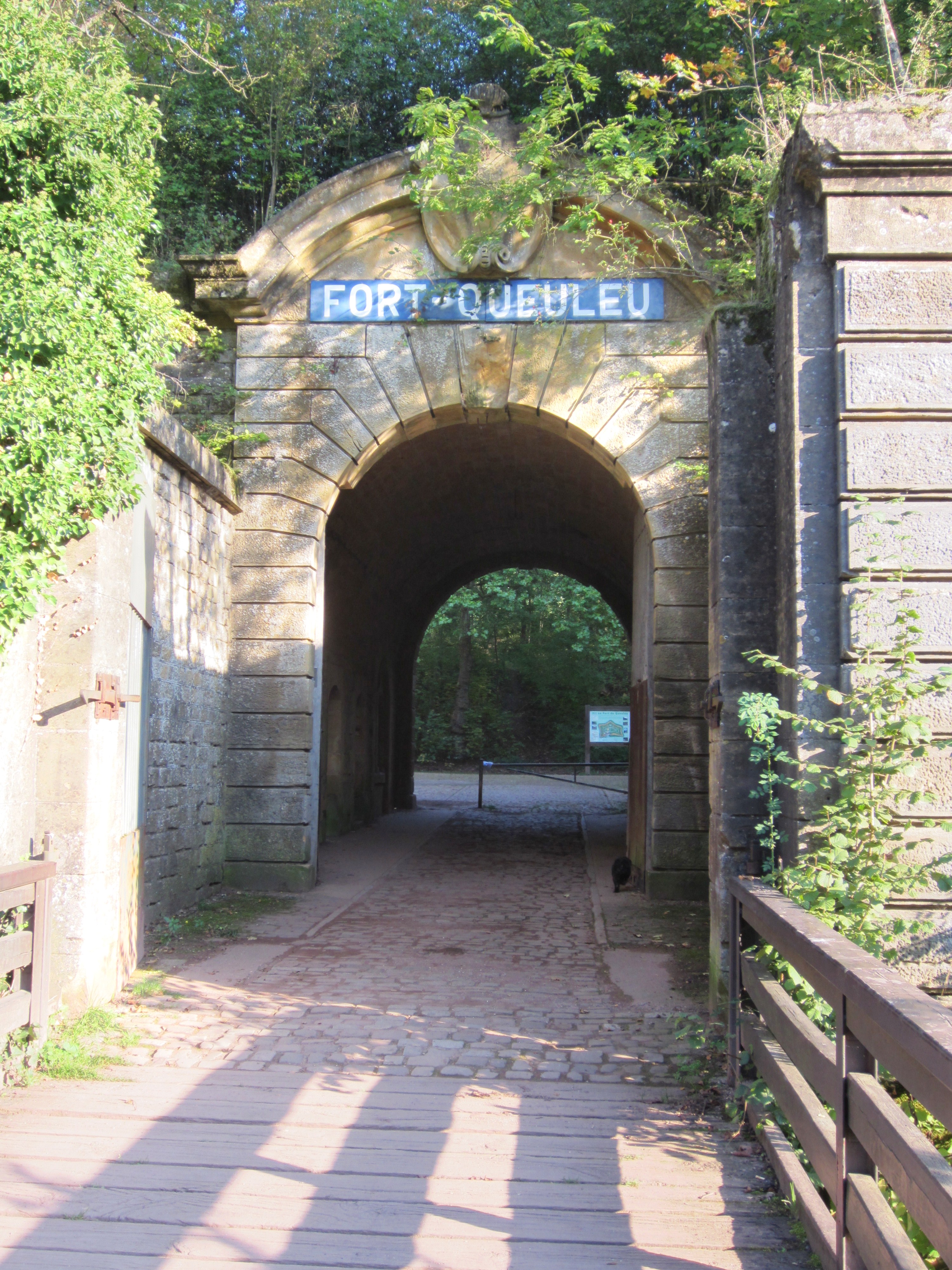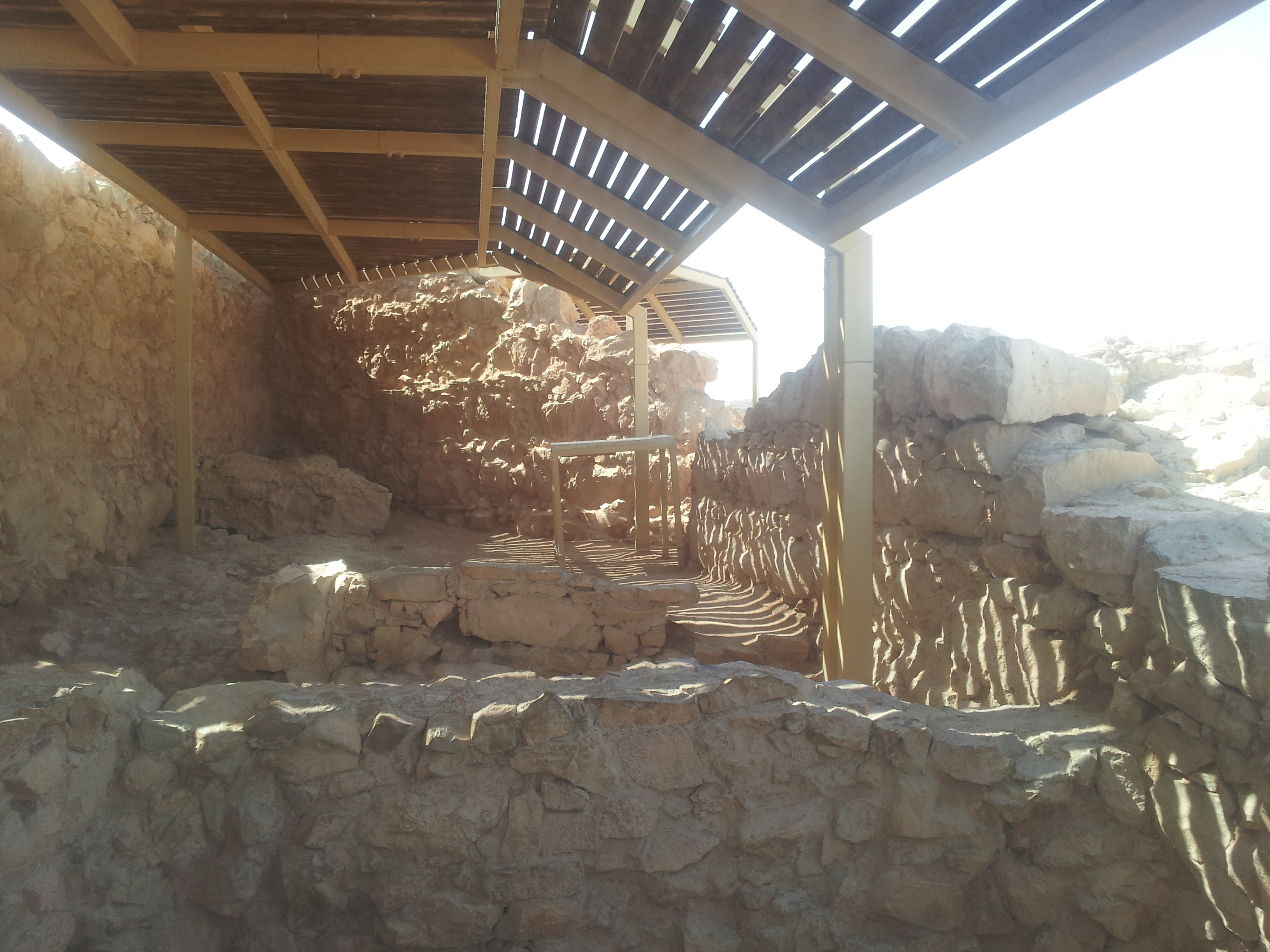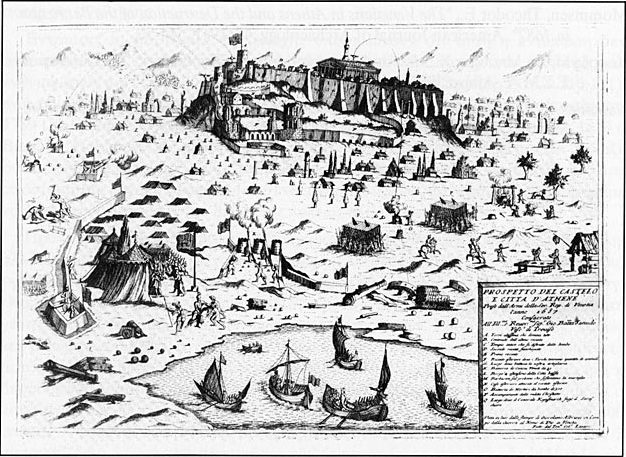|
Fort De Queuleu
The Fort de Queuleu () is a fortification to the southeast of Metz, near Queuleu, France. Construction began while part of Lorraine was under French rule in 1868. After the interruption of the Franco-Prussian War of 1870-71, the fort was improved between 1872 and 1875 by the German Empire, which had conquered the area in the war. Renamed Fort Goeben, it formed part of the first ring of the fortifications of Metz. Functionally obsolete by the First World War, it saw no military action, but was used by the Germans as a detention center for members of the French Resistance during World War II. Context The fort was one of the first built according to the fortification system developed by Lieutenant Colonel Raymond Adolphe Séré de Rivières. The goal was to build a discontinuous enclosure around Metz using a series of artillery forts spaced a cannonshot apart. In the 1860s tension was rising between France and Germany, causing France to attend to the fortification of its frontiers. M ... [...More Info...] [...Related Items...] OR: [Wikipedia] [Google] [Baidu] |
Séré De Rivières System
The system was an ensemble of fortifications built from 1874 along the frontiers, ridges and coasts of France. The fortifications were named after their architect, Brigadier-General Raymond Adolphe Séré de Rivières. The fortresses were obsolescent by 1914 but were used during the First World War. Background Following the Franco-Prussian War of 1870–1871, France found itself seriously weakened and isolated from the rest of Europe, menaced by Germany and stung by the loss of Alsace-Lorraine. At the same time as the departure of the last German troops, France created the Defence Committee (), which was active between 1872 and 1888, whose mission was to reorganize the defence of the French frontiers and coasts. It was necessary to compensate for the lost territories of the north-east; to modernise old fortifications, which had been shown to be wanting in the last war and to create new fortifications proof against modern weaponry using new and more powerful explosives. ... [...More Info...] [...Related Items...] OR: [Wikipedia] [Google] [Baidu] |
Casemate
A casemate is a fortified gun emplacement or armoured structure from which guns are fired, in a fortification, warship, or armoured fighting vehicle.Webster's New Collegiate Dictionary When referring to antiquity, the term "casemate wall" means a double city wall with the space between the walls separated into chambers, which could be filled up to better withstand battering rams in case of siege (see .) In its original early modern meaning, the term referred to a vaulted chamber in a fort, which may have been used for storage, accommodation, or artillery which could fire through an opening or embrasure. Although the outward faces of brick or masonry casemates proved vulnerable to advances in artillery performance, the invention of reinforced concrete allowed newer designs to be produced well into the 20th century. With the introduction of ironclad warships, the definition was widened to include a protected space for guns in a ship, either within the hull or in the low ... [...More Info...] [...Related Items...] OR: [Wikipedia] [Google] [Baidu] |
Schirmeck
Schirmeck () is a commune in the Bas-Rhin department in Grand Est in north-eastern France. It is the location of the Alsace-Moselle Memorial museum. The name of the town means "protected place". In Lorraine dialect it is called "Chermec". The inhabitants are known as "Schirmeckois". Geography The town is situated on the banks of the Bruche, in the Vosges mountains. The commune extends over 1142 hectares from the Petit Donon to the Bruche, from the Grandfontaine stream to the Tommelsbach stream, taking in the Évêché hills, 832m high. The area is mountainous and belongs to the Devonian Dinant primary rocks, made up of a series of schists and grauwackes in an irregular flow created at the bottom of a sea that was shaken by volcanic eruptions. Most of the territory is covered by forest, on steep slopes, but rich in mineral deposits, particularly iron and manganese. The town is narrowly confined between the mountain side and the Bruche river, so a 610-metre road t ... [...More Info...] [...Related Items...] OR: [Wikipedia] [Google] [Baidu] |
Struthof
Natzweiler-Struthof was a Nazi concentration camp located in the Vosges Mountains close to the villages of Natzweiler and Struthof in the Gau Baden-Alsace of Germany, on territory annexed from France on a basis in 1940. It operated from 21 May 1941 to September 1944, and was the only concentration camp established by the Germans in the territory of pre-war France. The camp was located in a heavily forested and isolated area at an elevation of . About 52,000 prisoners were estimated to be held there during its time of operation. The prisoners were mainly from the resistance movements in German-occupied territories. It was a labor camp, a transit camp and, as the war went on, a place of execution. Some died of exhaustion and starvation – there were an estimated 22,000 deaths at the camp and its network of subcamps. Many prisoners were moved to other camps; in particular, in 1944 the former head of Auschwitz concentration camp was brought in to evacuate the prisoners of Natzwei ... [...More Info...] [...Related Items...] OR: [Wikipedia] [Google] [Baidu] |
Jean Burger
Jean Burger, alias "Mario", was a member of the French Resistance during World War II. A member of the French communist party, he was born in Metz on 16 February 1907 and died at the Mittelbau-Dora concentration camp on 3 April 1945. Biography Youth and political engagement Born into a family of tradesmen, Jean Burger studied at the Ecole Normale de Montigny and became a teacher in the industrial basin of Lorraine.Pierre Schill, tribune libre, ''l'Humanité'', 15 février 2007 He rose rapidly in the Communist Party and became departmental secretary for the Moselle anti-fascist movement ''Paix et Liberté'' ("Peace and Liberty"). Burger became involved in recruitment for the International Brigades during the Spanish Civil War. In September 1939, Burger was mobilized as part of the 460th Pioneer Regiment of the French Army and was stationed on the Maginot Line where he was taken prisoner on 17 June 1940. Burger and his brother escaped during Pentecost in 1941. Jean Burger took the p ... [...More Info...] [...Related Items...] OR: [Wikipedia] [Google] [Baidu] |
Joseph Derhan
The Derhan group was an element of the French resistance in the Moselle department of France during World War II. It was founded by Joseph Derhan, a laborer from Hagondange who had in 1942 formed a group called the ''Parti de Gaulle'' composed of fifteen workers from the valley of the Orne, who supported Charles de Gaulle. Active in 1942 and 1943, the group was dismantled by the Nazis between January and May 1944. The members were tried between 7 and 13 November 1944 at Bayreuth. Joseph Derhan (1903–1944), the principal activist, was already dead, having died ten days after his arrest, under torture, at the Fort de Queuleu near Metz. The group had been given the missions of collecting arms for the Liberation, distributing pro-Gaullist propaganda, inciting German draft resisters and French citizens avoiding the Reichsarbeitsdienst The Reich Labour Service (''Reichsarbeitsdienst''; RAD) was a major paramilitary organization established in Nazi Germany as an agency to help mit ... [...More Info...] [...Related Items...] OR: [Wikipedia] [Google] [Baidu] |
World War II
World War II or the Second World War (1 September 1939 – 2 September 1945) was a World war, global conflict between two coalitions: the Allies of World War II, Allies and the Axis powers. World War II by country, Nearly all of the world's countries participated, with many nations mobilising all resources in pursuit of total war. Tanks in World War II, Tanks and Air warfare of World War II, aircraft played major roles, enabling the strategic bombing of cities and delivery of the Atomic bombings of Hiroshima and Nagasaki, first and only nuclear weapons ever used in war. World War II is the List of wars by death toll, deadliest conflict in history, causing World War II casualties, the death of 70 to 85 million people, more than half of whom were civilians. Millions died in genocides, including the Holocaust, and by massacres, starvation, and disease. After the Allied victory, Allied-occupied Germany, Germany, Allied-occupied Austria, Austria, Occupation of Japan, Japan, a ... [...More Info...] [...Related Items...] OR: [Wikipedia] [Google] [Baidu] |
Mining (military)
Tunnel warfare refers to aspects of War, warfare relating to Tunnel, tunnels and other underground cavities. It includes the construction of underground facilities in order to attack or defend, and the use of existing natural caves and artificial underground facilities for military purposes. Tunnels can be used to undermine fortifications and slip into enemy territory for a surprise attack, while it can strengthen a defense by creating the possibility of ambush, counterattack and the ability to transfer troops from one portion of the battleground to another unseen and protected. Tunnels can serve as shelter from enemy attack. Since antiquity, sappers have used mining against walled cites, fortresses, castles or other strongly held and fortified military positions. Defenders have dug counter-mines to attack miners or destroy a mine threatening their fortifications. Since tunnels are commonplace in urban areas, tunnel warfare is often a feature, though usually a minor one, of ... [...More Info...] [...Related Items...] OR: [Wikipedia] [Google] [Baidu] |
Battle Of Spicheren
The Battle of Spicheren, also known as the ''Battle of Forbach'', was a battle during the Franco-Prussian War. The German victory compelled the French to withdraw to the defenses of Metz. The Battle of Spicheren, on 6 August, was the second of three critical French defeats. General (later field marshal) Helmuth von Moltke had originally planned to keep Bazaine's army on the Saar river until he could attack it with the 2nd Army in front and the 1st Army on its left flank, while the 3rd Army closed towards the rear. The aging General von Steinmetz made an overzealous, unplanned move, leading the 1st Army south from his position on the Moselle. He moved straight toward the town of Spicheren, cutting off Prince Frederick Charles from his forward cavalry units in the process. Background The French declared war before their troops were in position to invade Germany. The Germans, commanded by Field Marshal von Moltke, began to assemble into three armies, which were to invade Fr ... [...More Info...] [...Related Items...] OR: [Wikipedia] [Google] [Baidu] |
Prussia
Prussia (; ; Old Prussian: ''Prūsija'') was a Germans, German state centred on the North European Plain that originated from the 1525 secularization of the Prussia (region), Prussian part of the State of the Teutonic Order. For centuries, the House of Hohenzollern ruled Prussia, expanding its size with the Prussian Army. Prussia, with its capital at Königsberg and then, when it became the Kingdom of Prussia in 1701, History of Berlin, Berlin, decisively shaped the history of Germany. Prussia formed the German Empire when it united the German states in 1871. It was ''de facto'' dissolved by 1932 Prussian coup d'état, an emergency decree transferring powers of the Prussian government to German Chancellor Franz von Papen in 1932 and ''de jure'' by Abolition of Prussia, an Allied decree in 1947. The name ''Prussia'' derives from the Old Prussians who were conquered by the Teutonic Knightsan organized Catholic medieval Military order (religious society), military order of Pru ... [...More Info...] [...Related Items...] OR: [Wikipedia] [Google] [Baidu] |
Mortar (artillery)
A mortar today is usually a simple, lightweight, man-portable, muzzle-loaded cannon, consisting of a smooth-bore (although some models use a rifled barrel) metal tube fixed to a base plate (to spread out the recoil) with a lightweight bipod mount and a sight. Mortars are typically used as indirect fire weapons for close fire support with a variety of ammunition. Historically mortars were heavy siege artillery. Mortars launch explosive shells (technically called bombs) in high arching ballistic trajectories. History Mortars have been used for hundreds of years. The earliest reported use of mortars was in Korea in a 1413 naval battle when Korean gunsmiths developed the ''wan'gu'' (gourd-shaped mortar) (완구, 碗口). The earliest version of the ''wan'gu'' dates back to 1407. Ch'oe Hae-san (1380–1443), the son of Ch'oe Mu-sŏn (1325–1395), is generally credited with inventing the ''wan'gu''. In the Ming dynasty, general Qi Jiguang recorded the use of a mini cannon called ... [...More Info...] [...Related Items...] OR: [Wikipedia] [Google] [Baidu] |





